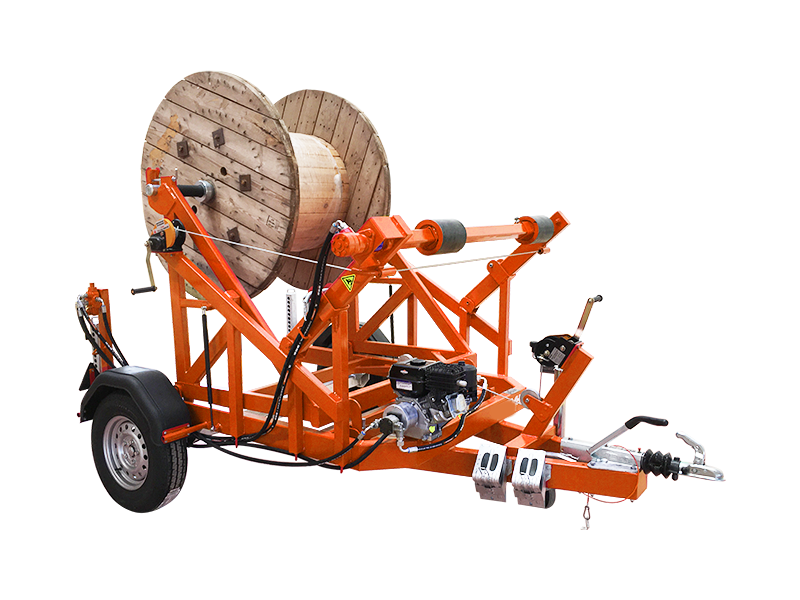Cable lines have many advantages: they are safe, less prone to failure, durable, and do not spoil the landscape. The investment involves significant costs, which is why it is so important that the service life of a cable line lasts several decades. Therefore, it is necessary to select cables with the appropriate design and technical parameters – good insulation is particularly important, so it is worth examining the advantages and disadvantages of different insulating materials.
Structure of Power Cables
It is worth starting with what a power cable consists of. Its components include one or more conductors, which may (but do not have to) be covered with a protective layer and (sometimes) a protective sheath. A cable may also consist of insulated conductors enclosed in a sheath/protective covering and armor. For this reason, a cable stripping tool becomes essential, allowing the removal of outer layers. A power cable differs from a wire because it includes a return conductor.
Various materials are used in the production of power cables, and the same applies to insulation. It is used to isolate individual parts from each other and from grounded elements. Simply put, insulation is made in two ways. It can be created from paper impregnated with a filling compound – such cables are called traditionally insulated or mass-impregnated cables. Insulation can also be extruded – in that case, polyethylene and cross-linked polyethylene are used.
Different Types of Insulation for Power Cables
During the laying of cable lines, it is very important to protect them from damage. Care should be taken at every stage: from producing cables with proper insulation, to careful transport (for which, for example, a cable drum trailer is used), to correct installation techniques. This is a broad topic, but in this article, we will focus on safety during the initial stages – namely, during the production of power cables.
Paper Insulation
This type uses cable paper impregnated with a non-draining (also called thickened) compound. The paper is made from sulfate cellulose pulp produced from spruce or pine wood. The degree of pulp refining plays a significant role, as it affects the properties of the finished paper. The less refined the fibers, the stronger and more absorbent they are, but the more air-permeable the paper becomes. Naturally, electrical strength is also important, and it increases with higher density, purity of the pulp, and uniform fiber distribution. Unfortunately, high air permeability, which occurs with low fiber refining, reduces electrical strength. The paper must meet specific technical requirements – for instance, its thickness should be within the range of 0.12–0.008 mm, and the breaking load in the transverse direction should not be less than 59 N.
Not only the paper itself matters but also the substances used for its impregnation. For cables with rated voltages up to 18/30 kV, two types of oil-based impregnating compounds are used: regular and non-draining. Regular compound is made from cable oil and pine rosin. Its main advantage is its low viscosity.
Non-draining compound is produced differently – it is made from cable oil thickened with synthetic waxes and polyisobutylene. Pine rosin is also added, serving as a stabilizer. The waxes and polyisobutylene increase elasticity. However, like any other solution, non-draining compounds also have drawbacks. If the oil comes from petroleum distillation, it unfortunately has a high thermal expansion coefficient. Increasingly, however, synthetic non-draining compounds are used, which have a thermal expansion coefficient similar to that of regular compound.
Advantages and Disadvantages of Paper Insulation
The main advantages of paper insulation include its low cost and high durability. However, it also has several disadvantages – primarily that it is heavy and rigid, which makes installation difficult and requires the use of an additional lead or aluminum sheath. Environmental concerns also limit its use, as it carries the risk of polluting the environment. If damage occurs to the metallic sheath of the cable, the compounds used in the impregnation process may leak into the surroundings. This is one of the main reasons why synthetic insulation materials are increasingly being used.
When laying cable lines, specialized equipment is used, such as a foot-operated hydraulic pump. However, it is important not to forget the basics – the cables themselves, including the insulating materials used in their production. Extruded insulation replaces paper wrapping not only because of its technical parameters but also because it protects the environment from harmful substances.

